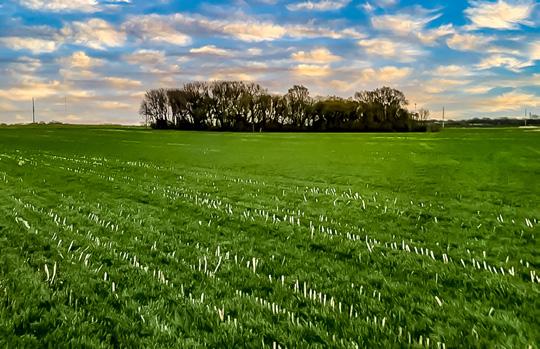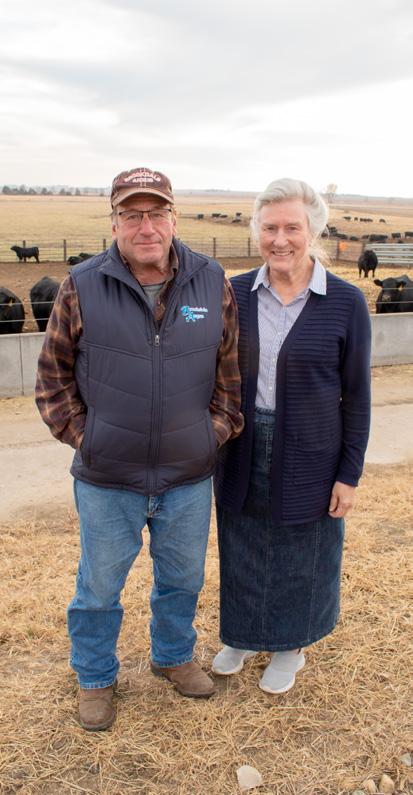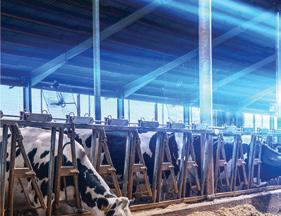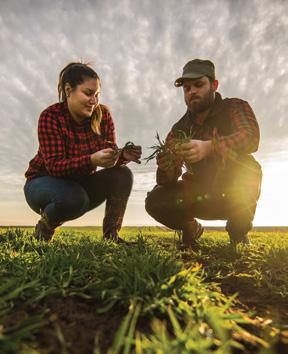








































The Farming Families is distributed free exclusively to the farmers, ranchers and producers in rural Sioux, Plymouth and Lyon Counties. All rights reserved. Content in this magazine should not be copied in any way without the written permission of the publisher. The Farming Families assumes no responsibility for unsolicited manuscripts or photographs. Content in articles,
are not necessarily endorsed by
From birthcare to urgent care ... pediatrics to geriatrics ... screenings to surgeries … we offer the right care at the right place at the right time.


Orange City Family Medicine: 712-737-2000


Hospers Medical Clinic: 712-752-8800
Mill Creek Family Practice: 712-448-2000
Orange City Walk-In Clinic: 712-707-6070
Hospital/Emergency Room: 712-737-4984
Safe family medicine clinics in three communities, plus Walk-In Clinic and Emergency Medicine in Orange City.
Skilled family doctors, nurses, surgeons, therapists, urgent care and emergency medicine providers, and support staff.
Essential health and well-being services, screenings, and medical care for every stage of life ... every day.



 By Bob Fitch
By Bob Fitch
Life’s journey has taken Bruce Brock from being a grunt at the bottom of the world’s deepest gold mine to being on stage with national politicians and celebrities. As a young man, he baled hay, shoveled manure, walked beans, drove truck and was a ranch hand. Since then, he’s auctioned millions of dollars in land and livestock as well as million-dollar works of art. To top it off, he earned the title of World Champion Auctioneer in 1994.

Bruce is the owner of Brock Auction Company, Inc. of Le Mars. His grandfather, Viggo Brock, was a chimney sweep who immigrated from Denmark in the late 1800s and rose to become a real estate professional in Battle Creek, Iowa, beginning in 1919. The real estate tradition was handed down to Viggo’s son, Bob, and then to Bruce. Today, Bruce’s daughter, Libby, represents the 4th generation in the land sales business.
When he graduated from high school, Bruce had plans to become a forester and attended Black Hills State College in Spearfish, S.D. After several years, he decided he’d rather work than go to school.




“I had a couple different jobs. I worked in the gold mine in Lead and worked for a rancher picking up hay and sheep in Wyoming bringing them to the Belle Fouche sale barn.” His job at Homestake Mine took him 7,200 feet underground a time or two. “I was just a grunt, but I’m so glad I did it. I'd run the drill when somebody's partner was sick; or I'd have to go in and clean tracks to help make sure that the trains wouldn't get derailed.” He didn’t spend much time at Homestake, but did enjoy his time as a ranch hand in western South Dakota.

When he and his wife, Teri, decided to get married, he returned to Battle Creek and worked in the family real estate business. In the late 1970s, when land was selling high, his father and grandfather found their real estate company was losing a lot of business to auctions. Bruce helped the company fill the gap by training at the Worldwide College of Auctioneering in Mason City.
Beyond conducting land auctions, he started doing livestock sales at the Sioux City Stockyards and expanded to other livestock barns in places such as Bassett, Neb., and Fort Pierre, S.D. But those high land values of the late 1970s quickly plummeted in the 1980s. According to Bruce, “The auctions in the 1980s were tough. There was a lot of them. One year, we probably did 60 or 70 machinery and land auctions, people going out
of business. It was just no fun.” He and Teri felt the same pain as some of their auction customers. Brocks started buying land when many people were selling – but land values just kept on dropping. “We went from having everything paid for to everything but the kids mortgaged. Our bank went broke and our loan rolled over to another bank who called in the loan.”
While they lost a farm in the ‘80s, the decade proved to be the


Donations and other support provided annually to multiple FFA programs, local fire departments, town projects, livestock shows, school programs.


beginning of an upward trajectory in the auctioneering profession.
“In 1984, I went to watch the World Livestock Auction Championships at Huron, S.D. Boy, I just got bit by the bug instantly thinking, ‘Wow, these guys are really, really good.’” He practiced in the office and recorded himself at sales. “I listen back to those old tapes now and I was so terrible that anybody with any brains would have quit. But I wasn't
smart enough to quit and so I just kept practicing and practicing.”
Taking part in auction competitions forced him to get better. In 1993, he won both the Greater Midwest Livestock Auction Championship and International Championship held in Calgary, Canada. The International win got him into the World Championships in 1994. He won in ’94 and it proved to be a
springboard of notoriety and helped the company expand its brand. “It was just one of those things where everything fell into place. The good Lord said, ‘Okay, it's your time to do this.’”

In 1996, he was part of the Festival of American Folklife at the Smithsonian Institute where he gave 34 lectures over 2 weeks on the art of auctioneering and where it fit into the American history story. “That was fun, and really enlightening. After that, I did a lot of television, a lot of work with sports and country western celebrities, and worked on stage with politicians.” Billionaires bid on art he auctioned in places like Jackson Hole, Wyoming, and Sante Fe, New Mexico. Among the rich and famous he’s met at fundraising auctions have been Vice President Dick Cheney, country music stars Trace Adkins and Hank Williams Jr., comedian Larry The Cable Guy and Gov. Sarah Palin. He’s proud of the millions of dollars he’s helped raise
Our publications are based on families and their stories. Our goal is to build community and connections within the Ag circles of South Dakota, Iowa and the surrounding areas. If you have a fun story or would like to suggest a family to feature, reach out to us at Bob@agemedia.pub.



for national and international conservation organizations.
“But probably the most gratifying part of our business is that it's allowed us to stay family-focused. Our daughter, Libby, is here in Le Mars and homeschools her kids. She’s the fourth generation with a real estate license and works here on the real estate side. My wife, Teri, is the one who really runs the business. She’s been my partner and right by my side the entire 50 years we’ve been married,” said Bruce.
He said a 50-year marriage is a great accomplishment –especially for Teri. “It's been pretty easy for me. Our kids turned out really well thanks to her. I spent a lot of time on the road away from the family. We've always been fortunate that she's kept us on track. I probably wasn’t a very good dad because I was gone so much. But I’m doing my best to be the best grandpa in the world.” Libby and her husband Levi Cargin have 3 children; and their son, Bob and his wife Sharlene, have 2 children. Bob is an attorney in Le Mars.
Late in 2020, Austin Popken bought in as a partner at Brock Auction. Austin is the son of local farmers and an SDSU graduate. But the new partner isn’t a sign that Bruce is retiring. “It means we're growing,” Bruce said. “There's a lot of things in the pipeline that we're working on.” Austin has been instrumental in expanding the company’s online auction presence. In addition, the company recently affirmed their growth mode by purchasing the former Northwest Bank building at 1321 Hawkeye Dr. on the Highway 75


business loop through the city. Whether the auction is online or in-person, he said the company remains committed to helping clients reach their goals. “Obviously, we want to get the most money we can for the property families have sacrificed for decades to build. But when the auction is over, we hope they tell us: ‘Thank you
for representing our family with honor and dignity.’ It's all about the sellers. We strive to put their family in the right light for the years and years of self-sacrifice they and their parents and grandparents made. My grandfather told me a long time ago to focus on making people's dreams and goals come true – and don't worry about the commission.”



































The early history of education in Plymouth County is most often a recitation of schools in Plymouth Township. In 1860, Plymouth County had 148 inhabitants. School districts were organized in Plymouth, Lincoln and Westfield Townships, although Westfield did not build a schoolhouse until years later. Tax receipts were split between Plymouth and Lincoln Townships – Plymouth received $323.68 and Lincoln received $174.94. “The average length of time the schools were taught during 1860 was but two and four-tenths months. The school report for 1860 records three schools, two gentlemen and one lady teacher, a school population of forty-three, but only fifteen enrolled, and three schoolhouses, valued at $950.” *


The Civil War paused the growth of railroads and pioneer settlement. By 1863, the county’s population had dropped to 93. Two schools were open with 19 students enrolled and an average attendance of 11. The age of enrolled students ranged from 4 to 21. There were 2 men and 2 women teachers. Schools were taught only 2 or 3 months of the year.*
With the advance of the railroad, the population in Plymouth County grew. Consequently, by 1869, there were 20 schoolhouses. Schools were in session for 6 months each year.*
Within Plymouth Township, the author gave a glowing report of schools during the 1870s and 1880s: “School matters have ever been properly conducted, and hence eminently successful, and today one finds an intelligent
class of people as the result. The township has now five sub-districts, each containing a good sized frame school-house. The average enrollment in 1889 was 131 pupils.”

The official report to the state also noted there were 20 shade trees growing on the township’s school properties.*
The first school in Merrill was built in 1889 when the town’s population was about 160 people. The building was 32 x 44 feet and was built at a cost of $1,450. Three additional lots were added to the school’s property in Merrill in 1894.**
In 1898, the district decided to expand to include 10 grades. Most students went to Le Mars to finish high school. The north part of the main building was built in 1912 and the first class graduated in 1914.**
The gymnasium and four classrooms were added in 1925. A new elementary school was occupied in September 1959, the first year of the newly organized Le Mars Community School District. The Kissinger Elementary School was completed and occupied during the 1969-70 school year.**
• *“History of the Counties of Woodbury and Plymouth, Iowa.” Published by A. Warner and Company. 1890-1891.
• **http://iagenweb.org/plymouth/Schools/MerrillSchoolEarlyHist.html

Providing



 WINTER ON THE FARM.
PHOTO BY CHRISTIAN BEGEMAN.
WINTER ON THE FARM.
PHOTO BY CHRISTIAN BEGEMAN.

The last Holsteins at Meadow Valley Farm were sold and hauled away 28 years ago. But Kurt Korver says, “I was born a dairyman and I always will be a dairyman.” To prove the point, he said every now and then his phone rings and a grandson says, “Grandpa, we overslept, can you do the milking?”
So Kurt heads to the barn and hooks up the milking machine to the dairy goats. “Dairy cows and dairy goats are the same thing. They're just a lot smaller,” he laughed.
Kurt and Mary Korver farm near Alton with their son and daughter-in-law, Justin and Brittany, who have two sons, Liam and Nikoli. Justin and Brittany, along with her sister Libby Ranschau, own the 50-head dairy goat herd. Kurt and Mary’s daughter, Jordan, helps out wherever she is needed, whether that’s loading out hogs, clipping goat horns or mowing.
Even though he continues to wear the title of dairyman, Kurt is also proud to wear the hat of pork producer. He and Mary put up 4 hog finishing barns in 1996 and 1997 and added 2 more in 2000. Initially, they custom-fed for New Fashion Pork, but today feed hogs for Smithfield. In the early years, they brought in feeder pigs, but later switched to bringing in iso-wean pigs. Korvers turn the barns twice a year. Kurt rarely

buys fertilizer for his corn and soybean crops because the hog manure alone pushes yields to around 200 bushels an acre for corn and 60 bushels for beans.




He believes the ongoing influx of outside dollars from companies such as Smithfield is a big part of the economic strength in Sioux County. Among other things, the steady income allows communities to provide support to public and private schools. “We always like to see new schools going up because so many buildings are getting older and older. Thank you to the taxpayers, if you know what I mean.”

Kurt is the only one in the family working full-time on the farm. Mary worked in the warehouse at Staples for 21 years, but 2 years ago decided “No more 50 pound boxes for this old lady.” Today, she’s a para-professional at Little Warrior Preschool in Sioux Center. She’s moved from 50-60 hour weeks to 35 hours over 4 days a week with summers off. “The worst part of my day now is sitting on those little chairs in the preschool.” She enjoyed her first summer off last year, which both gave her time to spend on the farm and allowed for “Grandma time” one day a week with Liam and Niko.
Daughter Jordan is also a para-professional, working with 4th and 5th graders at Sioux Center Intermediate School. Kurt and
There is nothing more important than protecting your grain harvest. Tri-States Grain Conditioning systems will help you remotely monitor your grain, save on energy costs and improve your overall grain storage.
YOU WILL ALWAYS BE CONNECTED TO YOUR GRAIN STORAGE. MONITORS YOUR GRAIN FROM THE PALM OF YOUR HAND. SIMPLE AND ACCURATE. FREE TECH SUPPORT FOR LIFE.Surrounded by dairy goats are Libby Ranschau, Brittany and Justin Korver, and their sons, Liam and Niko.
AMMONIA - the release of nitrogen equal to about 40 units per acre from building losses and field application.


HYDROGEN SULFIDE - one-third the loss of sulfur from manure.
METHANE - the loss of carbon in high PH and anaerobic conditions.
ONE A.C. PIT PUCK will control the gasses in 2,000 gallons of liquid manure for $3.50


It is the gasses that destroy the steel and concrete, and cause explosions in your buildings!! Gasses also cause coughing in hogs and workers!
QUESTIONS? CALL:
Verlyn Sneller: 712-441-6359 | Dennis Von Arb: 712-540-2439

DISTRIBUTORS:

Mary currently live with Jordan in Maurice. “Mom cooks, I clean. So it works pretty well,” she said. Kurt and Mary moved off the farm last June to make room for Justin and his family in the home which was built 9 years ago.
A native of Rock Valley, Brittany is a digitizer in the embroidery division at Staples in Orange City. From the first stitch to the last stitch, she’s working with the operators to ensure the insignias or artwork are perfect. No two fabrics are the same and the artwork being embroidered is often detailed, so attention to detail and knowledge of the technology is vital.
Last August, after 12 years in sales for Animal Health International, Justin went to work for the Dykstra family, who own three local companies. The Wood Shop in Orange City manufactures custom cabinetry. Resources Unlimited in Orange City provides human resource training. Dwellings Décor in Alton is an interior design and home décor shop. Justin is a bookkeeper/project manager for all 3 businesses. “I’m a point of contact between the brothers and the employees, helping everyone stay on deadlines and sales goals or certain targets for a quarter. I also work with marketing. I’m wearing various hats every day.”

Justin and Brittany’s shared background is dairy goats. “We met at 4-H dairy goat competitions. I came to the conclusion, ‘If you can’t beat the competition, marry the competition.’ So I married her,” he said.
Today, the dairy goats owned by Justin, Brittany and Libby are shown at local club shows and also at state fairs in South Dakota, Nebraska, Kansas and Iowa. Like many families who show livestock, it can be time consuming in the summer, especially for Brittany and Libby who attend more shows than Justin. He said, “A lot of the weekends are tires on the pavement Friday, show on a Saturday, drive home on Sunday. Then go back to work and do it all over again.”
This year at the Iowa State Fair, the team won grand champion and
best of breed with their Recorded Grades goats; grand champion Junior LeMancha; and grand champion and best of breed in the Senior LeMancha division.
Looking at all the trophies and ribbons won at the Iowa State Fair this year, Kurt said, “Let’s just say that Grandpa lost a bet. Before the fair, Liam said, ‘Grandpa, if we win trophies, you’ve got to buy us ice cream when we come home.’ I had to pay up because they brought home 4 trophies.’”
Justin and Brittany hope some day to start an on-farm creamery to process the goat milk and direct market it to retailers and consumers. There is consumer interest and demand for goat milk –the most important reason being it is easier to digest for some people than cow milk. Goat milk is higher in fat and calories than cow milk, but goat milk has more protein, vitamins and minerals (notably
more calcium and potassium). It’s also known for its creamy taste. Worldwide, more people drink goat milk than cow milk.
This coming summer, the family will share their love of dairy goats by offering sessions of “goat yoga,” which is regular yoga with baby goats added to the mix. The babies are known to sit or stand on the backs of yoga participants during the stretching. Goat yoga is a lighthearted way to relax while interacting with baby animals in a peaceful outdoor setting. Interacting with animals is known to reduce cortisol (the stress hormone) while simultaneously increasing serotonin and dopamine (hormones that trigger happiness).
Jordan said the Korver farm has become like Old MacDonald’s Farm. In addition to the pigs and dairy

goats, there are also bottle calves, chickens, bunnies, geese, ducks, cats, dogs and a llama. The bottle calves love drinking goat’s milk.



First grader Liam and preschooler Niko are in charge of collecting about 30 eggs a day from the 50 hens. “The first grader works as hard as anybody else does around here,” Jordan said. Mary agreed: “Liam always has a scoop shovel in his hands. He’s always scooping something. If it’s not corn or hay, then it’s manure.”



“You know, my dad ended up with nothing. But he took with him just as much as the guy who owned it all,” Mark said. “The best thing our parents left us was nothing, nothing material. There was nothing to fight over. But what they did leave us with was priceless.” The priceless inheritance was their faith and a commitment to personal and professional integrity, even when times are at their toughest.
Audrey said their own children are raising their grandchildren with the same values. “We’re thankful our children learned some things growing up on the farm that they took with them into adulthood.”
Mark agreed, “They're all respectful adults with jobs, they’re honest and upright.”
Mark and Audrey co-own Brookdale Angus north of Lester with their oldest son and his wife, Scott and Joni Metzger. They have 2 other sons, Gregg and Matt, and 2 daughters, Abby and Maggie. The couple recently welcomed their 13th grandchild to the family.
Looking back, Mark said, “My dad was really a good farmer, probably better than me. I learned how to be a good cow man from him.” But

Mark and Audrey Metzger know there are treasures more valuable than money or land to pass down from generation to generation.
Metzgers got caught at just the wrong time at the beginning of the 1980’s farm crisis. “We basically lost everything in the ‘80s. But Dad refused to do the debt write-off thing or declare bankruptcy. We were taught to be responsible for our actions. So, thus, everything was gone. It was tough on Dad and on us, too. We had to start over.”
Mark remembered, “The thing that sticks out in my mind most is April of 1985. We had three little kids aged 4 and under – and only $19 left between the two of us and we needed groceries. That’s how tough it was.” “We were waiting for my next paycheck,” Audrey said.
What do you do when things get that bad? “There was no help from anybody and I didn't want any help,” Mark said. “You get up the next morning and just start putting one foot in front of the other. Take it a day at a time and trust in the Lord.”
Audrey’s paychecks from McKennan were critical to keeping the family fed and helping keep alive the dream of living on the farm. Audrey has been a registered nurse with Avera for 40 years. Today she works as a phone triage nurse, similar to a phone-in “ask a nurse” service. Recently, she’s begun working from home part of the time. On
days when it’s snowy, slippery and blustery, she’s happy to do phone triage safe and sound in Lester.
Rising from the ruins of the 1980’s farm crisis, Metzgers built a new generation of success, first in dairy

and then in Angus cattle. According to Mark, “I slowly started piecing things together again. I always was good with dairy and that's where I went first.” He joked about a “very naïve” FHA officer who gave them a few dollars to start a dairy again in the mid-1980s. He succeeded in retrieving some of

Providing

their former genetics. Identifying and using superior cattle genetics seems embedded in the family’s DNA. The Metzger family and purebred cattle trace back 100 years to when Mark’s grandfather, Fred Metzger Sr., had Polled Herefords. His first production sale was in 1923. That herd was dispersed during World War II when help was hard to find.
Jersey dairy cattle were also brought onto the farm in the early 1920s. As an early believer in performance records, Fred Metzger’s Dairy Herd Improvement records date back to 1926. Fred, Jr. (Mark’s father) took an avid interest in the Registered Jerseys and developed one of the top herds in the Midwest.
In the late 1960s and early 1970s, Fred Jr. brought back beef cows,
experimenting with Polled Herefords and then trying Simmentals. In 1973, he bought his first Registered Angus cows and quickly came to appreciate the breed’s maternal excellence.
After getting back on his feet financially, Mark built a herd of Registered Jerseys which had many top 10 finishers at the All-American Jersey Show and, in 1998, was recognized as the #2 Performance Type Index herd in the nation. They decided to leave the dairy business in 2014 when youngest son, Matt, left for college and it became harder to find labor.

Scott is carrying forward the family legacy of utilizing superior genetics. He’s a graduate of Iowa State University and a former employee at Trans Ova Genetics. On top of their breeding business, Scott also

works full-time for Allflex Livestock Intelligence. Traditionally known as a livestock tag company, today Allflex is a leader in the development and delivery of data-driven solutions for animal identification, monitoring, farm management, and traceability.
Lessons learned from the dairy business helped Metzgers develop a high-producing, good-uddered, good-looking herd of maternally excellent Angus cows. According to Mark, “Our goal at Brookdale Angus has always been to produce structurally correct performance cattle with the commercial man in mind.” The operation has a strong artificial insemination program
At Premier, we know the importance of fast, reliable connections. That’s why when we install fiber optics, we don’t just bring the connection to your home. We will also bring fiber to your hog and dairy barns, shops, and accessory buildings. Get your home and operation up to speed with access to fiber and the best services from Premier Communications.









and has been on Angus Herd Improvement Records from the beginning. They developed a strong embryo transfer program utilizing IVF technology. Other keys to the program are genomic testing and ultrasound for carcass traits for all bulls and females.

Scott said, “Our niche is a balanced program versus chasing the bright, shiny current trend.”
Mark agreed, “A single trait selection works for a while, and some people make a lot of money, but it's not good for the long run. I’ve always tried to breed good looking cattle that perform. Along with that, you take care of your customers, you do business with integrity, you treat people right.”
The 11th Annual Production Sale at Brookdale Angus will be Friday, March 3, 2023. Updates and a sale catalog will be posted at www.brookdaleangus.com.
As a long-haired, cross countryrunning rebel of sorts at West Lyon High School in the 1970s, Mark didn’t plan to return to the farm. He went to college at Sheldon for mechanical drafting. After graduating, he was
helping on the farm when his dad had health problems in the fall of 1975. After the area got socked with a bad blizzard in November, one thing led to another, and Mark stayed put. When the farm crisis hit, he had opportunities for careers in other states, but chose to stay here and also began a long career with Select Sires and later with Semex.
Between the dairy and semen business, he’d sometimes put in 100-hour weeks. Audrey said, “When the kids were little, I worked 3 nights a week, and Mark might have to take a baby monitor with him when he was milking. He couldn’t be in the house when he had to milk at 3 or 4 in the morning.” Mark listened to the baby monitor in the barn, but said the kids were good and it wasn’t often he’d have to run to the house. “You just do what you got to do, one day at a time,” he said.
Audrey said 5-year-old Scott was really responsible. “He'd get his little self up and pour his breakfast and then Dad would come to make sure he’d get on the bus in time.” That continued with all 5 of the children.
Even though he was offered lucrative positions in the animal genetics field, Scott, like his dad, decided the farm was the right place
for his family. “Like a lot of people who grow up on farms, you have connections to the ground – you feel a sense of ownership to it. When I was working other places, being able to come out to the farm and get my hands dirty helped keep me sane.”
Joni grew up on a farm near Sioux Center and has plenty of hands-on experience. Not only did she learn how to operate most equipment, but she also was active with horses, and, for a time, helped work cattle for clients of Central Veterinary Clinic. Audrey described her daughter-in-law as a “great mom and right hand man who is a tried and true farm girl.”
Scott and Joni have 4 children. Colin, 8, is a hard-working 2nd grader who is passionate about learning. Callie, 6, is in kindergarten, makes friends easily and is the family’s animal lover. Clayton is 4 and “when he walks out of the house, every cow on the place gets nervous,” Scott said. He’s an energetic boy who is always working, whether that’s bringing a hammer or tape measure to Grandma’s house or digging a hole and using the dirt to “spread manure” on the driveway. Clara is 2 and knows how to make her opinions known. She has been a mama’s girl, but is now opening up to others.
Audrey hopes the grandchildren pick up the tradition of showing cattle at the Lyon County Fair. From the oldest to the youngest child, Mark and Audrey’s family ended up showing Jerseys, Holsteins or beef cattle for 25 consecutive years at the fair.
Joni hopes their children choose not only to show livestock at the fair, but also consider a career in agriculture. “The ideal scenario would be for us to grow the operation to a place where the kids could someday have the option to farm if they wanted to.”








FROM
INGREDIENTS
• 2 russet potatoes, scrubbed and cut into eighths
• ¼ cup grated Parmesan cheese
• 1 tablespoon olive oil

• 1 teaspoon onion powder
• 1 teaspoon garlic powder
• ¼ teaspoon salt
• ¼ teaspoon ground black pepper
2. Place potatoes, Parmesan cheese, olive oil, onion powder, garlic powder, salt, and pepper into a resealable plastic bag. Seal the bag, then shake until potatoes are evenly coated with seasoning. Spread potatoes on a baking sheet.
Melissa Baker, M.A., CCC-A, FAAA
Hear what you’ve been missing.














